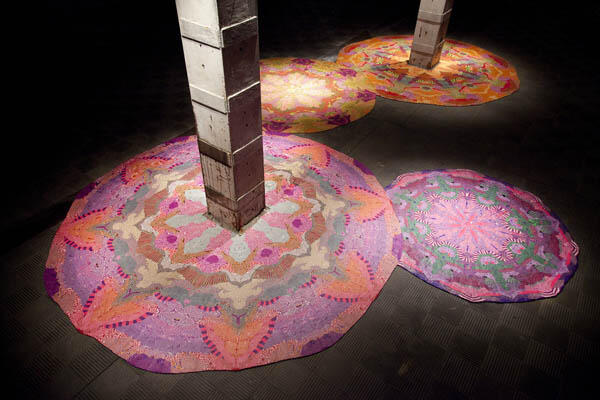Magdalena Atria
Centro Cultural Matadero, Madrid
Over the years, it has been characteristic of Magdalena Atria (Santiago de Chile, 1966) to maintain a constant activity in relation to her work with color. Aligned with certain elements of the more geometric abstraction, the work the Chilean artist created specifically for the Matadero Cultural Center is a good example of the consolidation of her treatment of the chromatic gamut and the relationship of her oeuvre with the organic and with nature. As a matter of fact, Cenotes may be considered a paradigmatic exhibition, both in terms of the concept behind it and of its execution.

Revolving around the geological concept of the dzonot, a Mayan word used to designate the freshwater wells created by erosion, Atria transforms the space into a magic environment in which the bases of the columns that support the roof of Madrid’s former slaughterhouse are decorated with plasticine carpets that open up new worlds. These universes are the same that were already mentioned in the Popol Vuh, and in which religious acts that cleared the way into the Xilbabá, the Mayan underworld, through those sacred gates, were practiced. The circular forms resulting, in turn, from thousands of figures, are bathed in light, highlighting the chromatic effect of those dreamlike geometries within the dark structure of the nave, and taking the connection between the fantastic and imagination to a new conceptual level through the relationship between the material, typically used by children, and the formal result.
-
 Cenotes, 2013
Cenotes, 2013
Vista parcial de la instalación - Plastilina - Dimensiones variables.




